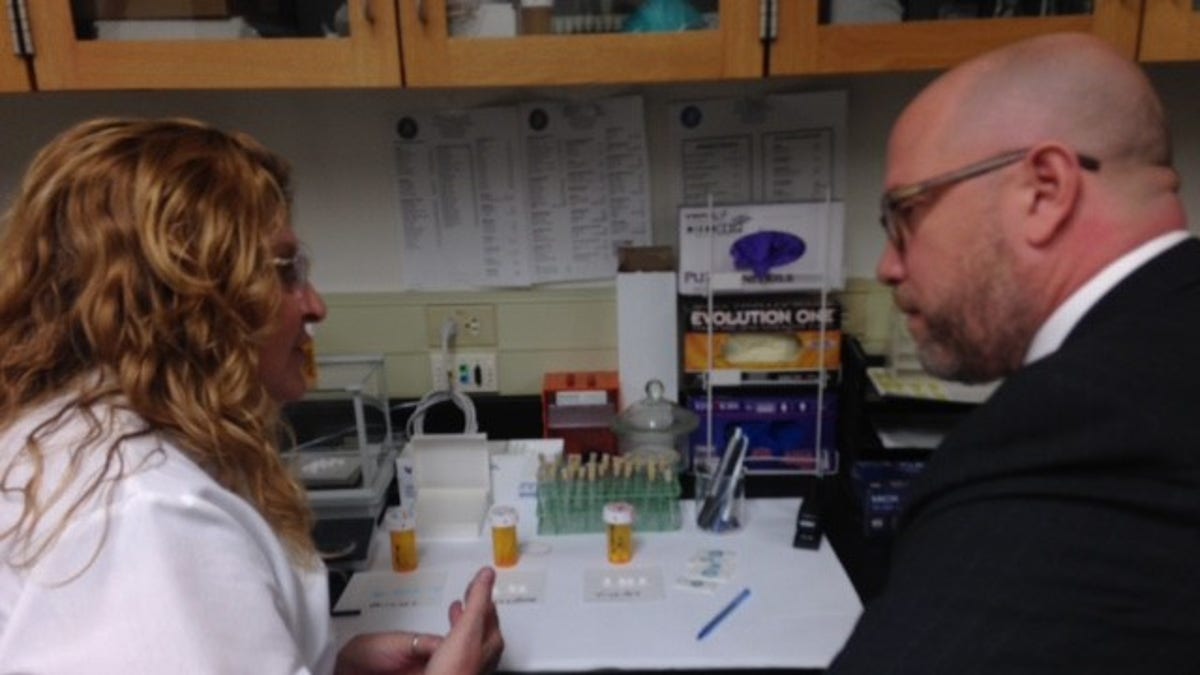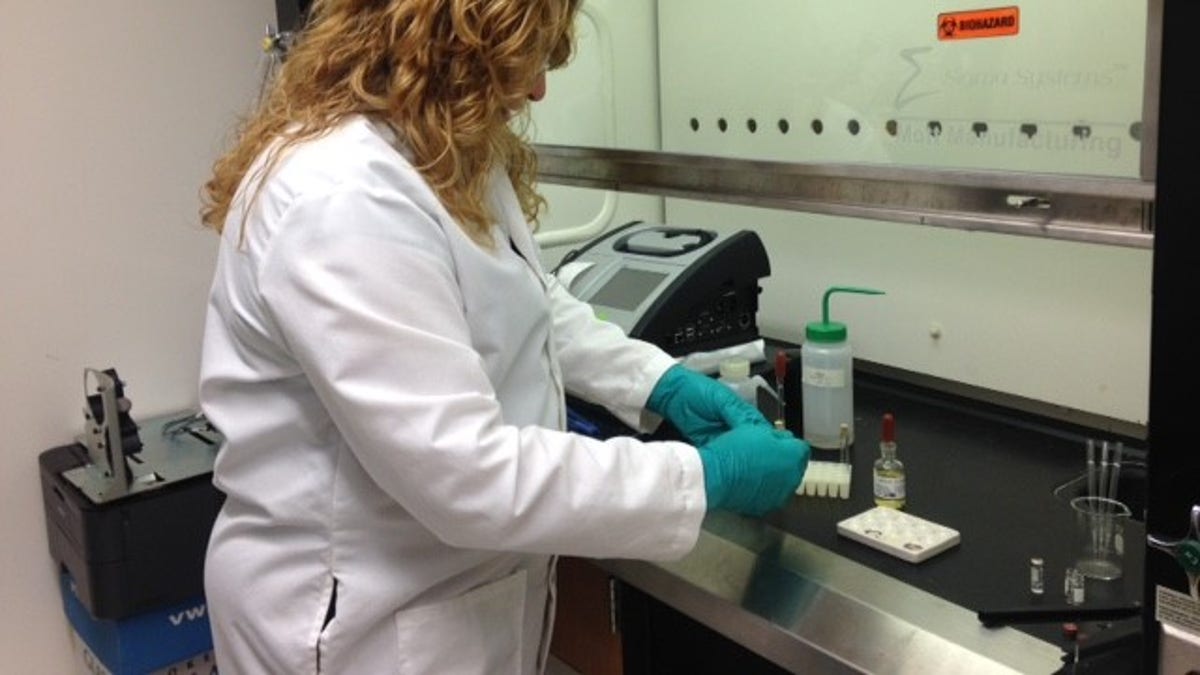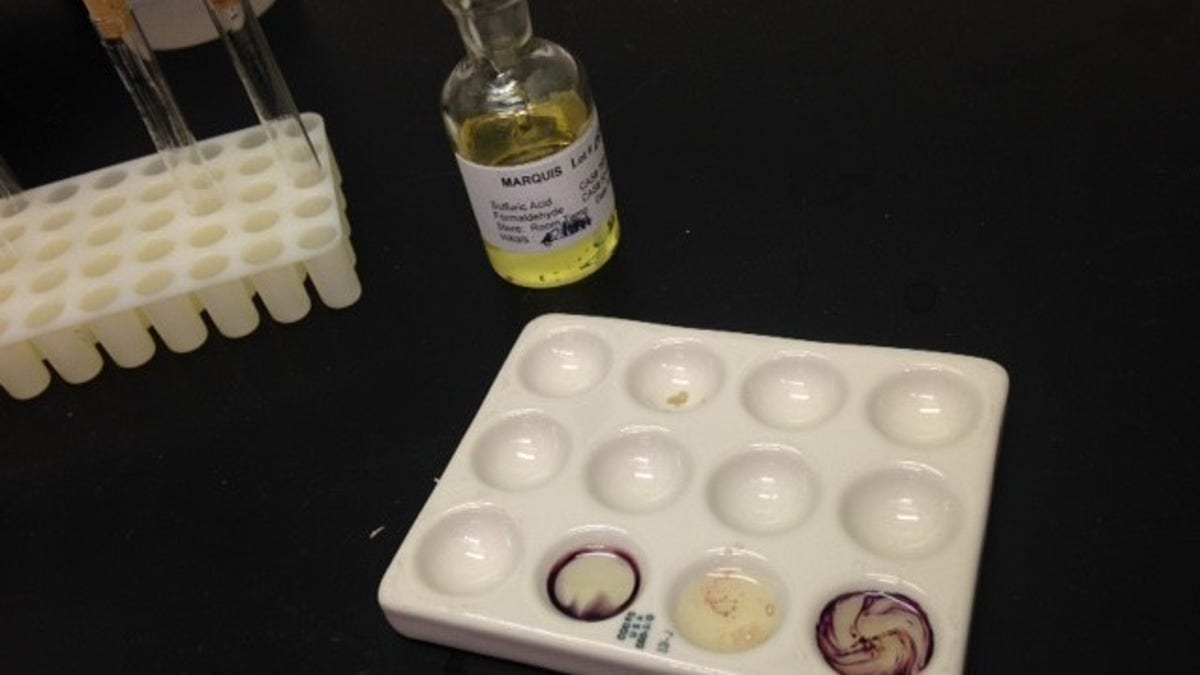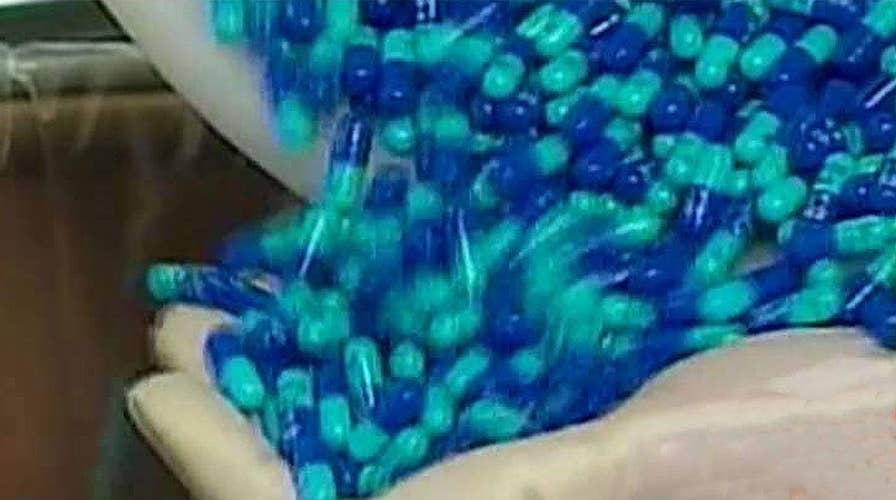NJ cracking down on prescription of opioids
Attorney General Christopher Porrino enforcing tough new regulations
The corridors are bright. Sparkling clean.
The windowed walls of the many rooms at the sprawling building in the suburb of Hamilton, N.J., provide a glimpse of the intensity of the mission here – investigators in white coats and protective gloves hunch over drug samples that are pouring in at a higher rate than ever before, and cutting thousands of lives short.
These days, it is a race against time as the men and women who work at New Jersey’s Office of Forensic Sciences conduct tests to identify ever-changing combinations of substances that often are lethal.
The accidental drug overdoses claimed about 1,600 lives in New Jersey in 2015, the last year for which data is available. That’s four times the number who died from homicide, three times the number killed in automobile accidents.
OPIOID ADDICTION CRISIS SPURS BRUTAL CANDOR IN OBITUARIES
A majority of them involved prescription painkillers. State officials say that number is certain to be higher for 2016, and perhaps this year, as well.
Opioids can be so addictive that many people develop a desperate need for them even after the pain has subsided, or disappeared. So when they’re turned away by doctors and pharmacies, they look for a fix on the streets, where illicit opioids increasingly are tainted with deadly substances.

Forensic scientist Deborah Cole shows a drug sample test to New Jersey Attorney General Christopher Porrino (Photo by Elizabeth Llorente)
At the lab the pressure is on to identify those substances and find another piece to the ever-changing puzzle of the killer epidemic in time to save lives by putting out warnings to the public, and giving law enforcement the data to trace the drugs to a dealer, and possibly his or her source.
“We’re very much at war here,” says state Attorney General Christopher Porrino as he walks through the lab and stops to talk to the men and women working there. “We’re trying to attack it on a number of fronts.”
In one room, forensic scientist Deborah Cole studies markings on pills and compares them with legitimate, pharmaceutical ones. She takes a sample and extracts from it and applies a color test to see what substance is in it.
“Sometimes pills are not what the markings indicate,” Cole said. “A Percocet might have fentanyl or heroin in it.”
“If it is an opioid it could [contain] heroin, it could be a fentanyl, it could be a clandestine pill – we just don’t know,” Cole said, exasperated. “We don’t know where it came from because it wasn’t purchased from the pharmacy.”

Forensic scientist Deborah Cole tests drugs at a New Jersey state lab. (Photo by Elizabeth Llorente)
Even carfentanil, a type of opioid that is so strong it’s been used to put down elephants, is making its way to the streets, unbeknownst to many of its victims.
“It’s a game of Russian roulette any time you take any type of drug on the street,” Cole says. “They are … from a drug dealer who only wants to make money. He doesn’t care about you.”
No sooner do they identify a new drug and classify it, when more appear. It’s an unrelenting revolving door.
The lab has seen its workload rise perceptibly over the years. Some of the newest substances to appear in New Jersey are tetrahydro fentanyl and acrylfentanyl.
The first quarter of this year, state officials say, there were 11,000 drug submissions to the state’s four labs. At that pace, the total will easily reach roughly 44,000 by the end of the year. State labs received about 38,000 in 2016.
New Jersey had one of the highest rates of emergency room visits for opioid-related reasons, according a report by the Agency for Healthcare Research and Quality.

A drug sample turns purple during a forensic lab test, indicating the presence of fentanyl. (Photo by Elizabeth Llorente)
While the state by no means has the worst rate of opioid overdoses in the nation, it is at the forefront of combatting the epidemic.
This is in no small part because, to Gov. Chris Christie, the crisis is personal.
One of his best friends from law school became addicted to prescription painkillers and was found dead of an overdose in a New Jersey motel.
"On the personal side," Porrino says, "this is heart-wrenching. Every one of us knows someone – family, friend, friend of a family member -- who suffered from this disease."
Earlier this year, Christie signed legislation that limits first-time opioid prescriptions to five days, and establishes strict guidelines for doctors to prescribe more. The measure also requires state-regulated health insurers to cover at least six months of substance abuse treatment.
New Jersey is also taking a hard line against doctors who do not exercise caution in prescribing opioids – since data shows that many people who overdose develop an addiction after getting prescription painkillers.
An analysis by the Star-Ledger, a New Jersey newspaper, found that doctors in the Garden State received roughly $1.6 million from 2013 to 2015 from pharmaceutical companies that marketed fentanyl. At the same time, fentanyl-linked deaths soared -- from 42 in 2013 to 417 in 2015.
While the substance originally was presented, validly, as a source
of relief for people dealing with cancer-related pain, it was made available to the public in a far less structured manner, the news outlet found.
It used to be, Porrino said, "that you could go in and have a wisdom tooth removed, and you could walk out with a 30-day supply of prescription painkiller that was an opioid derivative."
"We were the first [state] to take the prescribing limit down to five days," Porrino said. "That reduces the number of pills that are available for people to take and become addicted to."
In the last year, New Jersey has pursued criminal charges against some doctors and imposed sanctions, including suspension and taking away the license to practice. The crackdown on unscrupulous doctors is part of a concerted effort, as Porrino notes, in New Jersey to fight the opioid epidemic on multiple fronts – law enforcement, medical and a preventive educational campaign.
"When I first learned that eight out of 10 heroin addicts walking the street here in New Jersey and across the country became addicted from prescription pills, I knew we needed to do something," he said. "That was among the [most] shocking statistics I heard."
For Cole, as for many of the investigators painstakingly toiling to identify the next killer drug, the task is exhausting but vital.
"If you're a drug user, what you may have taken last week, the dosage you have taken, the tablet, may be laced with something different, more potent than what you are used to," Cole says. "And that one pill, that one injection, could kill you. It is all an unknown."


